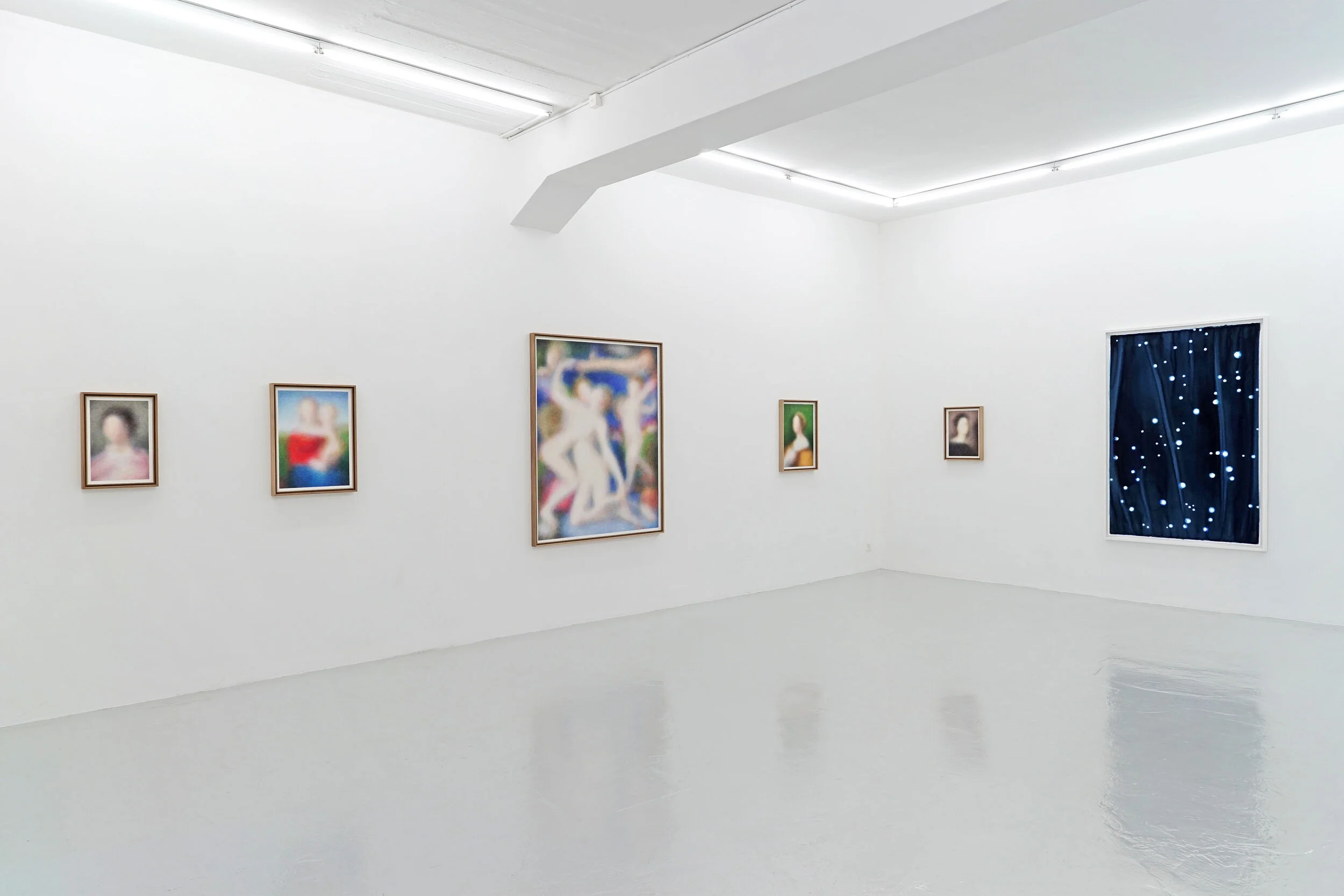
Slawomir Elsner – The Vision of Memory
Solo Show
5 September – 17 October 2020
We are very pleased to present the second solo exhibition by Slawomir Elsner (*1976 in Wodzisław Slaski, Poland, lives and works in Berlin) at the gallery. Like in his first exhibition three years ago, Elsner shows works on paper in two different techniques: Color pencil drawings after Old Masters and contemporary templates as well as luminous watercolors.
In the first room, the exhibition opens with three large-format watercolors that represent iridescent color spaces and radiate a sense of calm and contemplation. These impressions are reflected by their production: Elsner applies a layer of watercolor evenly on a lying paper in concentrated daily repetition, so that in the drying process the color particles settle and spread on the sheet. The surface tension on the paper and the differently applied colors create random patterns and nuances in the color fields. Often more color settles against the edges of the sheet due their higher tension, so that there is less color in the inner area and therefore the watercolors seem to glow from the inside out. In these works a principle of controlled randomness is applied.
In the main room of the gallery, Elsner unfolds a dense network of subtle references and comparisons with a total of twelve works. The direct juxtaposition of five pairs of pictures is the decisive dramaturgical setting: Elsner contrasts five colored pencil works based on Old Masters with four pencil works based on contemporary templates as well as with a watercolor. For four of the works after Old Masters, the models are paintings by the Renaissance artist Raffaelo Sanzio da Urbino, known as Raphael for short. The model for the fifth, larger-sized drawing is the Allegory of Love or Venus Kisses Cupid by the mannerist artist Agnolo Bronzino.
As always, the formats of the picture adaptations after Old Masters by Elsner correspond exactly to those of the original paintings. The strong reference to Raphael is partly due to the 500th anniversary of the year of death of this exceptional artist. To his selection based on paintings by Raphael Elsner creates direct thematic counterparts, contemporary correspondences. He juxtaposes the self-portrait of the Renaissance artist with his own. What is striking in Elsner's version is the predominant blue color scale, which makes one think of blueprints or color separations and thus refers to photographic procedures on which the drawing is ultimately based. Raphael's Portrait of a Young Man in delicate shades of pink finds its contemporary counterpart in the Portrait of a Boy (Bruno). This is the artist's son in a fashionable three-colored hoody.
The model for the contemporary Mother with Child also derives from Elsner's immediate family environment, as it is his wife with their younger child – which prompted Elsner to make the mischievous remark that the whole family is now gathered together in the exhibition. The portrait of an unknown, elegantly dressed Young Woman (after Raphael) finds its counterpart not in Elsner's private circle, but in the portrayal of the Spanish actress Penélope Cruz, a superstar of film culture generally considered to be very attractive, lending the exhibition a touch of pop culture. In all these line drawings, the figures appear as if behind frosted glass. With great precision, Elsner captures the posture of the persons and the colors of the original paintings by Raphael and Bronzino with parallel hatching. The parallel, exclusively by hand applied lines in different color gradations rightly gave Elsner the title of an outstanding color weaver. Since there is hardly a contemporary figurative counterpart for an allegory of love, Elsner juxtaposes the work with an identically sized watercolor with the color tones of red and light blue that predominate in the Old Master copy. These diverse cross-references are complemented by two large watercolors of the star constellations Orion and Hare and Virgo from The Series of the Night Pieces.
In the juxtaposition of emotional figures such as mother and child, self-portraits, film star and elegant lady and children, Elsner captures a leap in time over 500 years. In these pairs of pictures, Elsner visualizes that certain human behavior and postures do not change over the centuries. The Allegory of Love or Venus kissing Cupid (after Bronzino), its counterpart in watercolors, the two star constellations from the Series of Night Pieces and the three large-format watercolors from the Series Just Watercolors in the entrance room expand the pictorial cosmos of this very concise exhibition.
